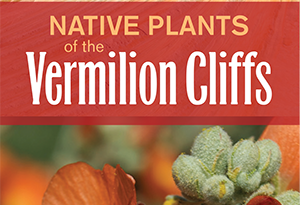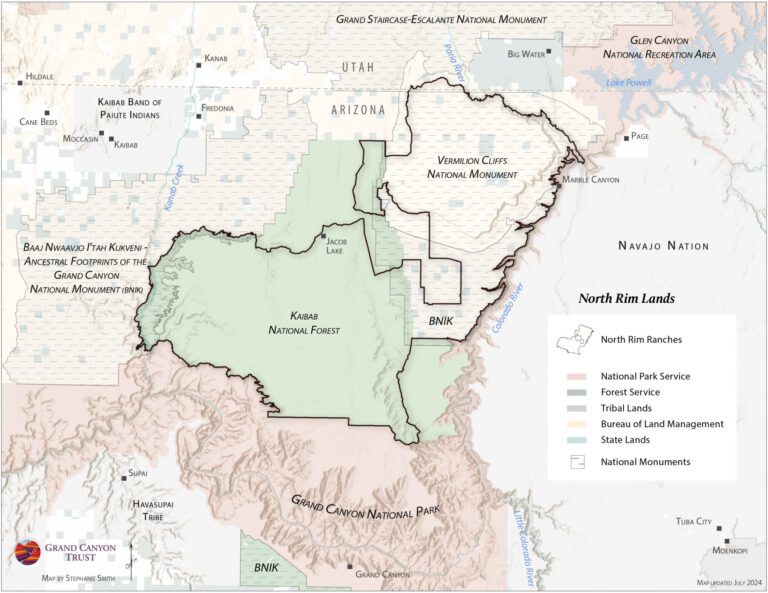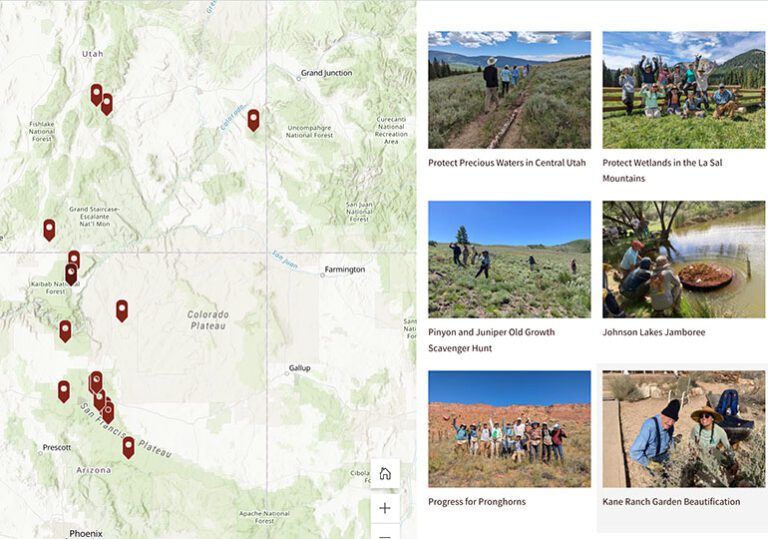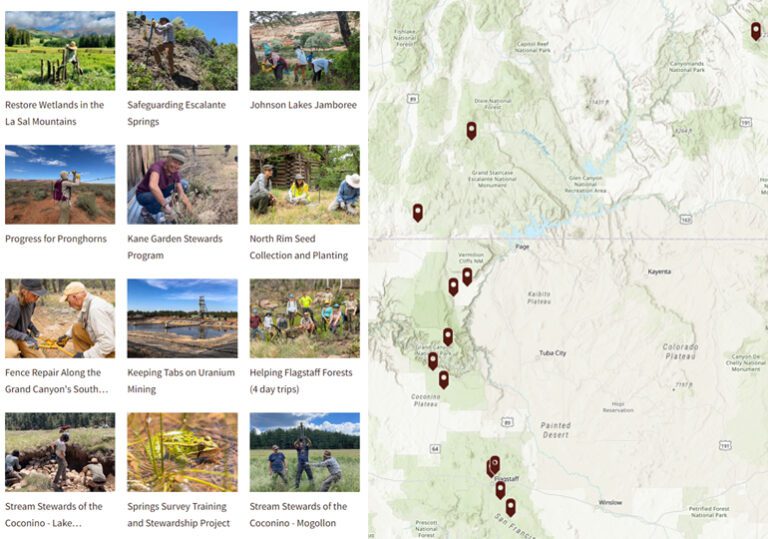This brochure outlines the native plants, plant communities, rare plants, and more that are found in Vermilion Cliffs National Monument.
Resources › Native Plants of the Vermilion Cliffs
Native Plants of the Vermilion Cliffs

Related Resources

Map of the Grand Canyon Trust’s North Rim Ranches located on the North Rim of the Grand Canyon.

In 2023, over 300 people contributed over 2,500 hours to restoration and research projects across the Colorado Plateau. Explore the map to see what we accomplished together.


